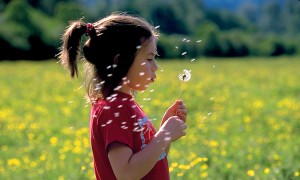
 When was the last time you climbed a tree? Or played in a mud puddle? Or went looking for frogs? And if you now have children, do your children do these things often? Do they connect with nature and their world around them? While you may not find this term in official medical books or scientific journals, it is fast becoming an agreed reality for most of our children: Nature Deficit Disorder (NDD).
When was the last time you climbed a tree? Or played in a mud puddle? Or went looking for frogs? And if you now have children, do your children do these things often? Do they connect with nature and their world around them? While you may not find this term in official medical books or scientific journals, it is fast becoming an agreed reality for most of our children: Nature Deficit Disorder (NDD).
Kids these days are spending too much time inside, fixated on computers, games and TVs. Some children have never touched grass or soil with their bare feet or been to a beach. Children’s general knowledge of their natural world is increasingly lacking, while technology takes over their knowledge bases and playtime. Perhaps the cause is fear: fear of the dangers, real and perceived, out there in the world that makes parents keep their children inside and safe.
Times have certainly changed since I was a child – the only time I wore shoes was to go to school, my mother was have to scream at us to come inside for dinner (because outside was always so much more exciting) and the natural world just held more attraction and activity than inside. Then again, we didn’t have computers, DVDs (or even videos until later), CDs and TV presented little variety in viewing.
Research indicates that natural outdoor play areas for kids are not being used enough. Parents are working longer hours, resulting in children being inside more. Children have less free, much-around, informal time. Their days are more structured, mostly to fit into mum and dad’s busier work and home schedules. Our kids’ world is increasingly plastic, all about safety, rules and regulations. I remember clearly kids falling off monkey bars in my primary school, breaking an arm or wrist, and it was simply accepted as part of growing up and that ‘accidents do happen’. Nobody sued anyone, blamed anyone and it was not an outrage.
ABS stats indicate our kids interact with computers and TVs for around 30 hours each fortnight, but only 11 hours each 2 weeks is spent on outdoor activities. One survey revealed that 50% of Aussie kids reported their favourite hobby was watching TV or playing computer games. When asked which was most important, TV or the environment, 75% of kids said TV, with 25% saying that playing computer games was the ‘most important thing in their life’. Research shows that kids who spend regular time in outdoor natural environments have reduced stress, less obesity and less depression, as well as attention-related disorders improving.
So what can we do to prevent NDD?
- Encourage (or gently enforce) our kids to play outside more – supervised of course – to explore and discover their natural world
- Engage with your children more in general muck-around, informal, free time
- Engage and encourage your kids’ imaginations more
- While it may sound corny these days, help your kids to build a tree-house, a cubby-house, a fort or a swing – even an old tired on a rope from a tree is great – keep it simple, real and hi-touch (not hi-tech)
- If there’s not much nature in your backyard or street, take your kids for a walk or bike ride to local parks, forests and wetlands, or the beach, to see more nature – make up games for them to spot birds’ nets, specific trees or collect seeds, flowers or stones and shells
- Make TV and computer games a ‘sometimes activity’, rather than a dominant focus in your house – maybe only on wet days or as a reward for doing homework – and definitely watch more nature documentaries with your kids, encouraging them to ask questions and develop an inquiring mind for nature
Every change you make to be greener, however small, makes a difference to your planet and your health.
